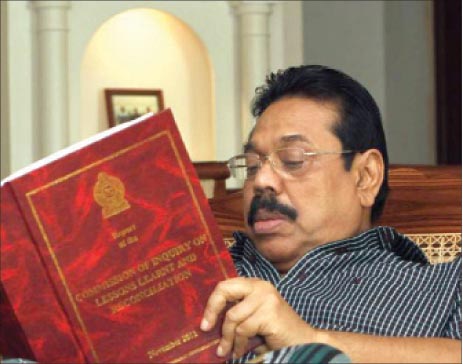Ilankai Tamil Sangam30th Year on the Web Association of Tamils of Sri Lanka in the USA |
||||
 Home Home Archives Archives |
UNHRC ResolutionA view from The Tamil diasporaby S. Gary Anandasangaree, The Sunday Leader, Colombo, April 11, 2011
The armed conflict maybe over in Sri Lanka but peace has not been won since the brutal end to the 27-year-old war three years ago. Credible allegations of war crimes and crimes against humanity have been levelled against both parties to the conflict. The underlying grievances of the Tamil minority remain outstanding with no clear proposal for long term peace in sight. It is in this backdrop that the United Nations Human Rights Council adopted a resolution on Sri Lanka seeking a roadmap to attaining peace, reconciliation and accountability. The resolution was proposed by the United States, and had 40 co-sponsors, including Canada.
The end of the war in Sri Lanka has brought an increased level of militarization in the north and east of the island. The Singhalese population is being relocated into traditional Tamil areas, thereby squeezing and curtailing the democratic voice of Tamils in those regions. There is a growing problem of sexual violence, harassment and abuse of women by military officials. Just recently, a known member of paramilitary force, a key ally of the government was accused of raping and killing a 13-year-old girl. There is rampant use of “white vans”, a term used in Sri Lanka to kill those who dissent or those who need to be taught a lesson. Thousands of civilians, many accused of being armed cadres of the LTTE, are being held under emergency laws without charges, trials, or convictions. These atrocities continue with impunity, as the mechanisms available to investigate, prosecute, and punish those who commit these types of crimes have failed, including, its tattered judiciary. Sri Lanka’s response to these allegations has been to rely on its own findings of its Lessons Learnt and Reconciliation Commission (LLRC), that by all accounts fall short of providing a meaningful model for reconciliation. It fails to address the issues of accountability, especially in light of the comprehensive report of the Panel of Experts Report of the UN Secretary General that was released last summer. Despite its shortcomings, the resolution last week calls on the Sri Lankan government to implement the constructive elements of its own LLRC Report, and seek other means to independently investigate allegations. The expectation that the Sri Lankan government would use this international censure to gravitate towards a peace pact seems overly optimistic. Initial responses from Sri Lanka are worrisome, given the statements of people like Mervyn De Silva, a government Minister, who promised to break the limbs of human rights defenders who returned to Sri Lanka from Geneva. Several protests were orchestrated in Colombo condemning the resolution – protests that could not be held without government endorsement. G. L. Peries, a high ranking Minister deferred any decision to implement the resolution at the hands of President Mahinda Rajapaksa. The government controlled media continues to polarize the nation into the Bush mantra of either you are with us or against us, thereby failing to provide the context and analysis necessary for the message to be properly delivered to its people so they could understand the resolution. There is a lack of independent media able to provide this narrative to its readers. If Sri Lanka continues towards this eccentric, irrational response to the resolution, it may squander yet another opportunity towards the path to peace. The resolution as adopted is considered very weak, yet the significance lies in the international community finally giving Sri Lanka enough rope to hang itself. |
|||
|
||||
 The writer is a Barrister and Solicitor, and is the Sri Lankan Monitor for Lawyers’ Rights Watch Canada. He attended the Nineteenth Session of the Human Rights Council Session held in Geneva from Febrary 27th to March 23, 2012. Gary is also one of the senior members with Canadian Tamil Congress and functions as CTC legal counsel as well.
The writer is a Barrister and Solicitor, and is the Sri Lankan Monitor for Lawyers’ Rights Watch Canada. He attended the Nineteenth Session of the Human Rights Council Session held in Geneva from Febrary 27th to March 23, 2012. Gary is also one of the senior members with Canadian Tamil Congress and functions as CTC legal counsel as well.